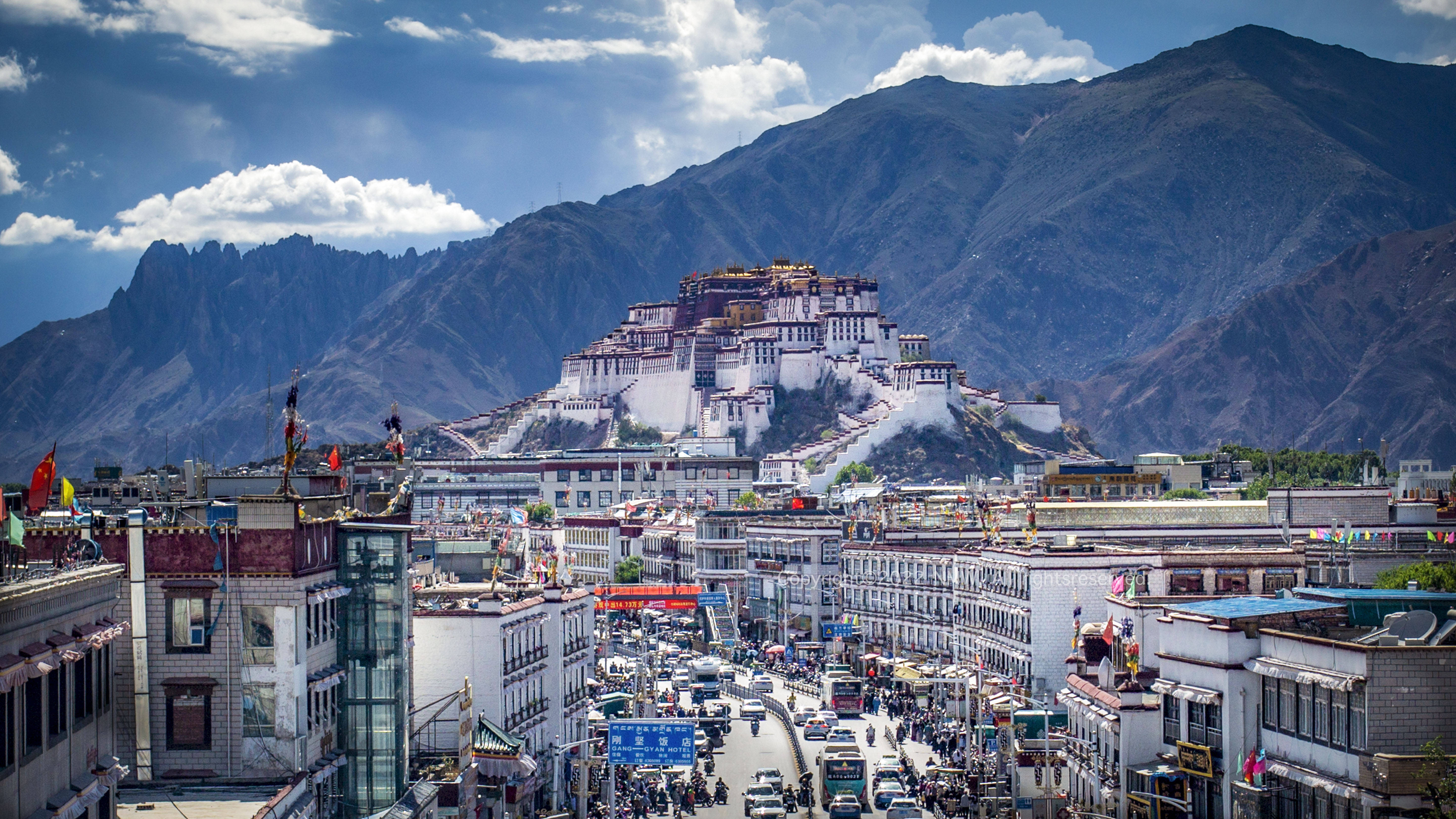
The Potala Palace is located on Red Mountain (Marpo Ri) in the northwest of Lhasa, the capital city of the Tibet Autonomous Region. It is the world's highest palace complex that combines architecture, fortress, and monastery, as well as the largest and most complete ancient castle-style building complex in Tibet.
The Potala Palace was first built in the 7th century during the reign of Songtsen Gampo, the founder of the Tubo Kingdom, with a history of over 1,300 years. Built on the mountain, the palace complex features overlapping buildings with majestic momentum and a towering presence. The solid granite walls, flat white玛草 (white willow) roof decorations, resplendent golden roofs, and the large gilded bottles, banners, and prayer flags with strong decorative effects all shine together. The striking contrast of red, white, and yellow colors, as well as the layered,套接建筑 style, all reflect the charming characteristics of traditional Tibetan architecture.
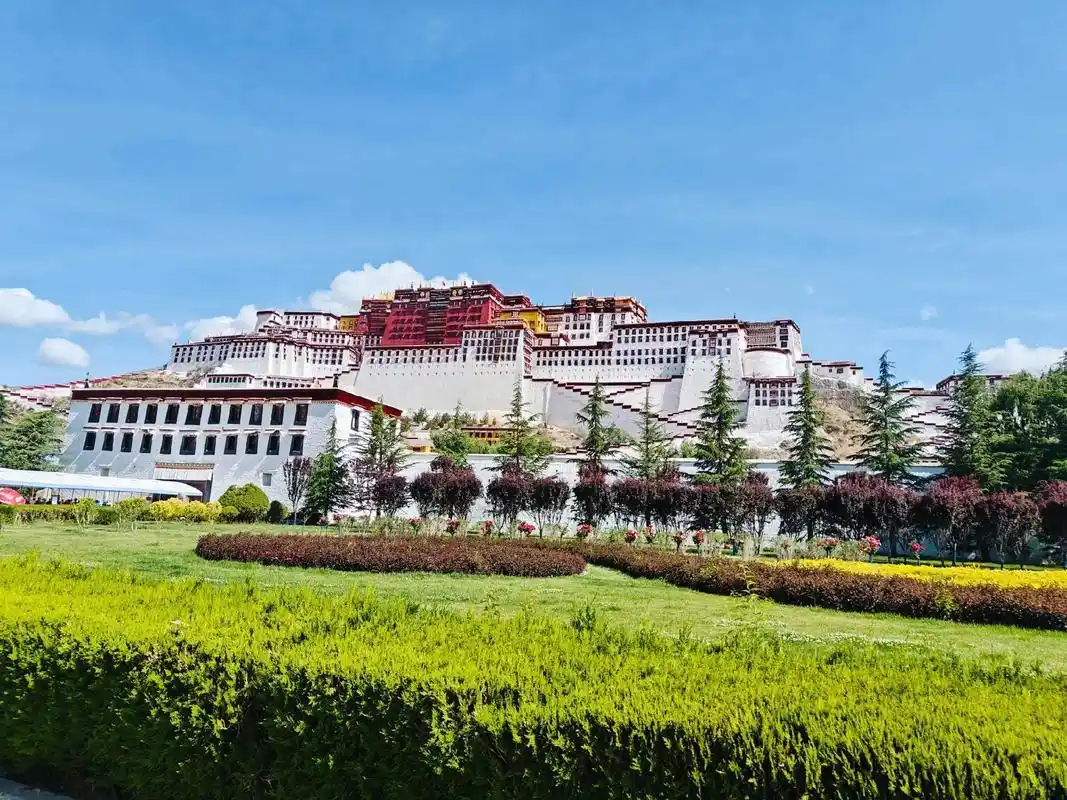
The Potala Palace sits at an altitude of 3,700 meters, covering a total area of 360,000 square meters, with a total building area of 130,000 square meters. The main building is 117 meters high, with 13 floors, including palaces, stupa halls, Buddha halls, scripture halls, monks' quarters, and courtyards.
In 1961, the Potala Palace was designated as a National Key Cultural Relics Protection Unit by the State Council of the People's Republic of China. In December 1994, UNESCO listed the Potala Palace as a World Cultural Heritage site. In January 2013, the China National Tourism Administration awarded the Potala Palace the title of National AAAAA Tourist Attraction.
After moving the capital to Lhasa, Songtsen Gampo, the Tubo king, ordered the construction of the Potala Palace to welcome Princess Wencheng from the Tang Dynasty and Princess Bhrikuti from Nepal. The original palace had 999 rooms, plus a meditation room on the mountain, totaling 1,000 rooms. Later, it was severely damaged by lightning and wars.
The 5th Dalai Lama, Ngawang Lobsang Gyatso, unified Tibet with the support of Güshi Khan and established the Ganden Phodrang government. In 1645, the 5th Dalai Lama began to rebuild the Potala Palace, and after three years, completed the White Palace complex.
The Red Palace complex was built under the supervision of Desi Sangye Gyatso, forming the basic architectural scale of the Potala Palace. After the Red Palace was completed, the Stupa Hall of the 5th Dalai Lama became an important part of the Potala Palace.
The Potala Palace underwent several renovations and expansions, adding multiple stupas and halls. During the period of the 13th Dalai Lama, large-scale repairs and expansions were carried out, forming the scale we see today.
After the founding of the People's Republic of China, the central government attached great importance to the protection of the Potala Palace and allocated funds for large-scale repairs on multiple occasions. From 1989 to 1994, the state invested 53 million yuan in a large-scale restoration of the Potala Palace. From 2002 to 2010, another 170 million yuan was invested for a second large-scale restoration.
The Potala Palace is an outstanding representative of Tibetan architecture, integrating Tibetan, Han, and Nepalese architectural styles to form a unique artistic style:
The palace preserves a large number of precious murals with rich themes, bright colors, and exquisite techniques, which have high artistic value
Various gold, silver, copper, and jade sculptures with exquisite shapes and superb craftsmanship, reflecting the highest level of Tibetan sculpture art
Collecting a large number of precious thangkas, most of which depict religious stories and historical events, are treasures of Tibetan painting art
The architectural layout, decorative art, and spatial treatment of the Potala Palace all reflect the outstanding wisdom and creativity of the Tibetan people. It is an important symbol of Tibetan culture and a precious cultural heritage of the Chinese nation.
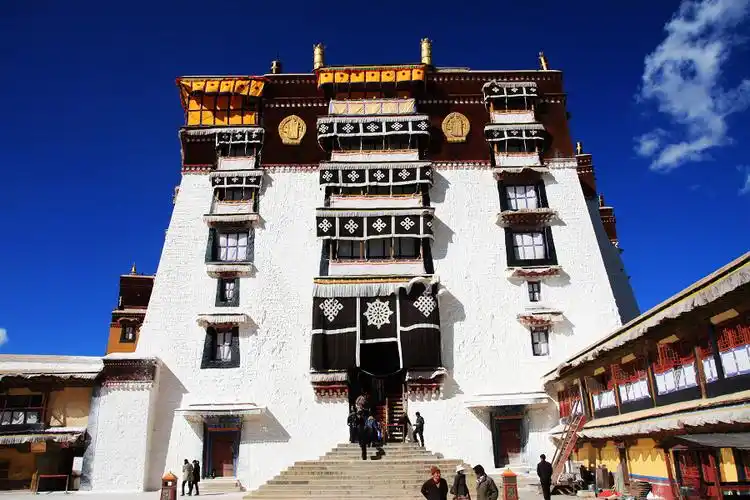
The White Palace is the east wing of the Potala Palace, 7 stories high, serving as the winter residence of the Dalai Lama and the office of the former Tibet local government. The top floor has the Dalai Lama's bedroom called "Sunlight Hall," named for being bathed in sunlight all day long.
Located in the central position of the Potala Palace, the Red Palace mainly consists of the Dalai Lamas' stupa halls and various Buddha halls. There are 8 stupas in total, among which the stupa of the 5th Dalai Lama is the largest, standing 14.85 meters tall and using 3,721 kilograms of gold.
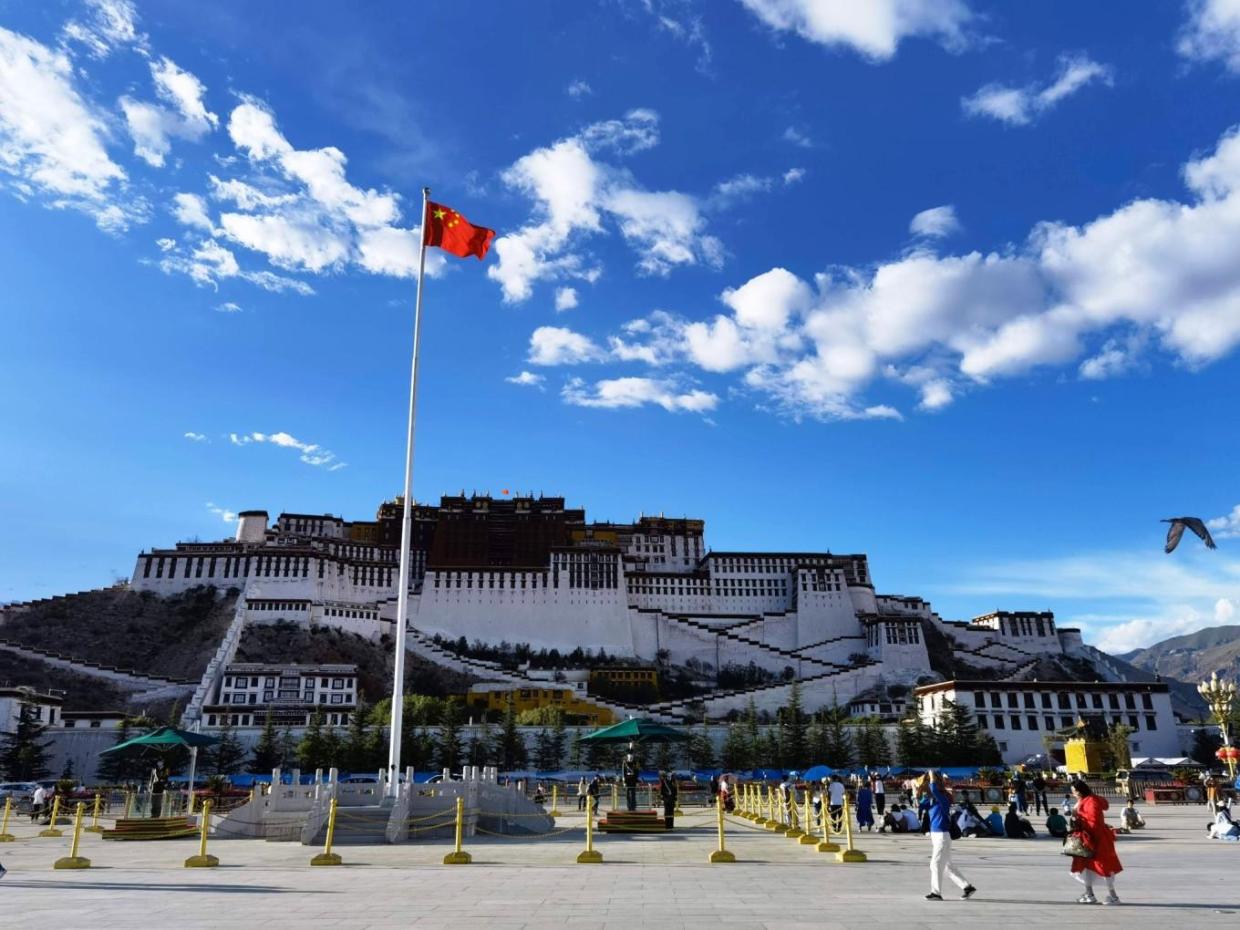
Located directly in front of the Potala Palace, it is the highest city square in the world. The square center stands the Monument to the People's Heroes, and to the south is the Monument to the Peaceful Liberation of Tibet. It is the central square of Lhasa.
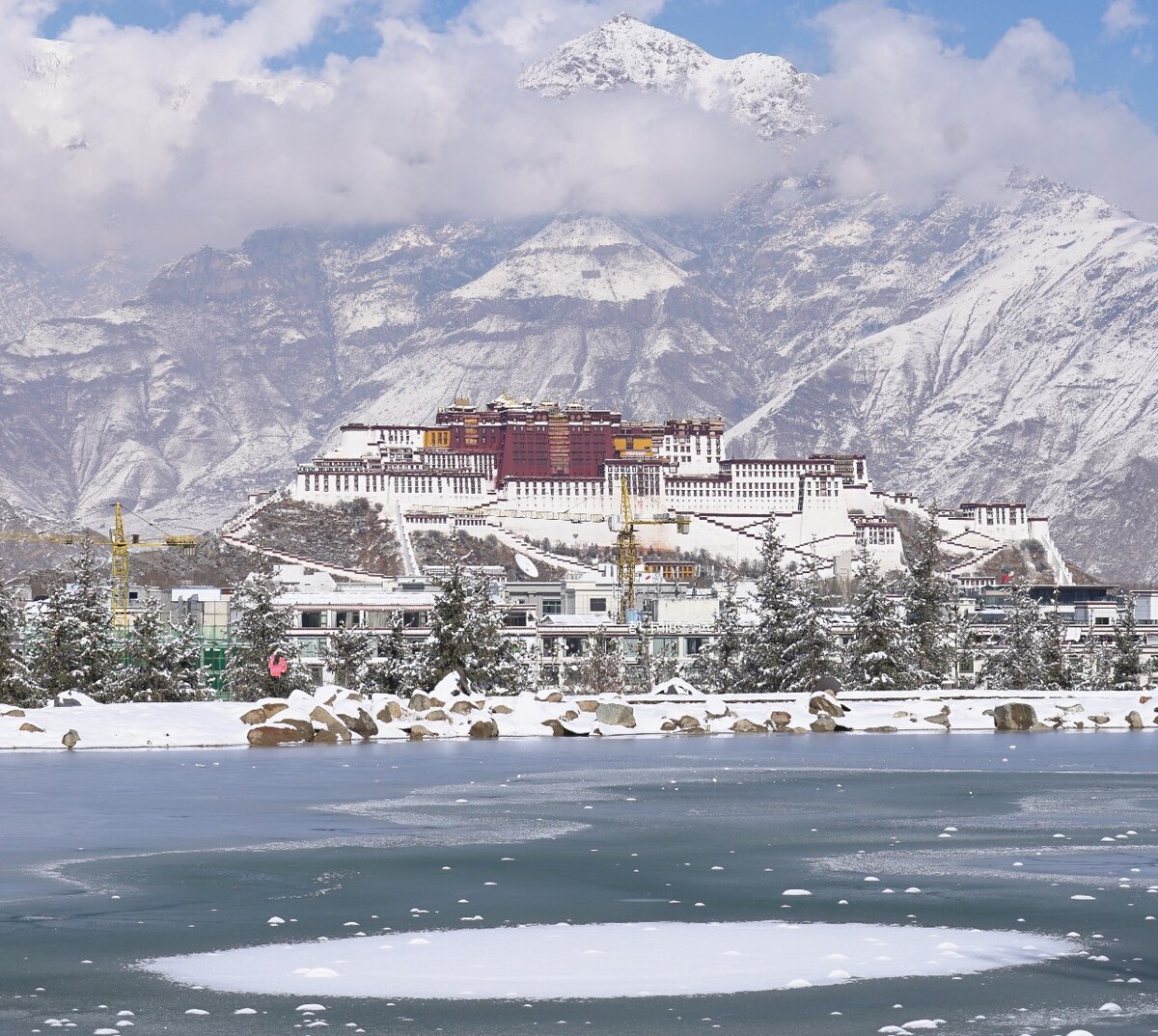
Located at the foot of the Potala Palace, it was the location of the former Tibet local government's administrative offices, including the court, prison, scripture printing house, and Tibetan army headquarters, showcasing the political, economic, and cultural life of old Tibet.
| May 1 - October 31 | 08:30-18:00 |
| November 1 - April 30 | 09:00-17:30 |
| * The Potala Palace implements a reservation system with limited daily visiting hours | |
| Peak Season (May-October) | 200 yuan/person |
| Low Season (November-April) | 100 yuan/person |
| * Reservation required 7 days in advance through the Potala Palace ticketing system | |
World Cultural Heritage (listed in 1994)
First built in the 7th century, rebuilt in the 17th century
About 3,700 meters
Covers an area of 360,000 square meters, main building 117 meters high
Symbol of Tibetan culture, the highest palace in the world
Jokhang Temple, Barkhor Street, Norbulingka, Tibet Museum
0891-6834362
A sacred place in the hearts of Tibetan Buddhism believers, with rich religious relics and artworks
Witness to the development of Tibet's history and an important symbol of Han-Tibetan cultural exchanges
Symbol of Tibet's local political power and also a symbol of the unity of the Chinese nation
Collects a large number of precious murals, sculptures, thangkas, and other artworks
Listed in the World Cultural Heritage名录, it is a common cultural wealth of all humanity